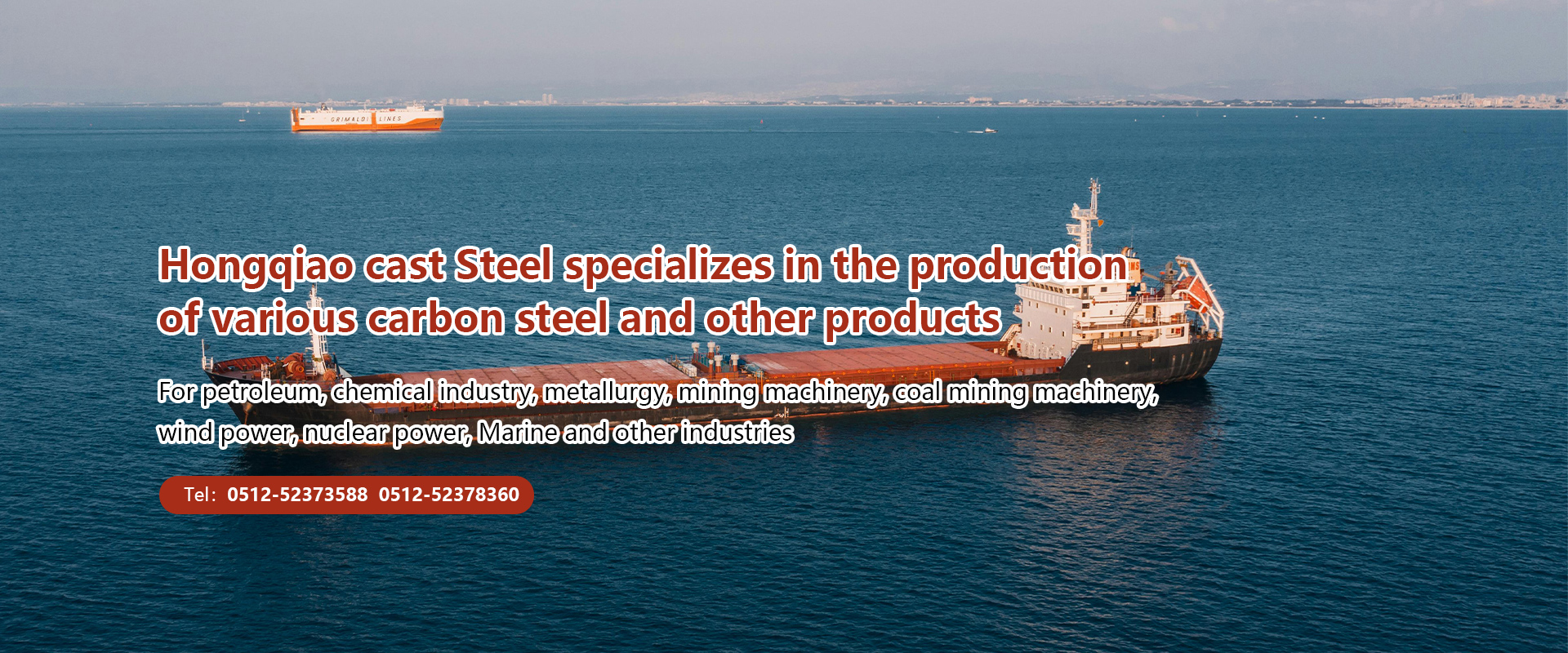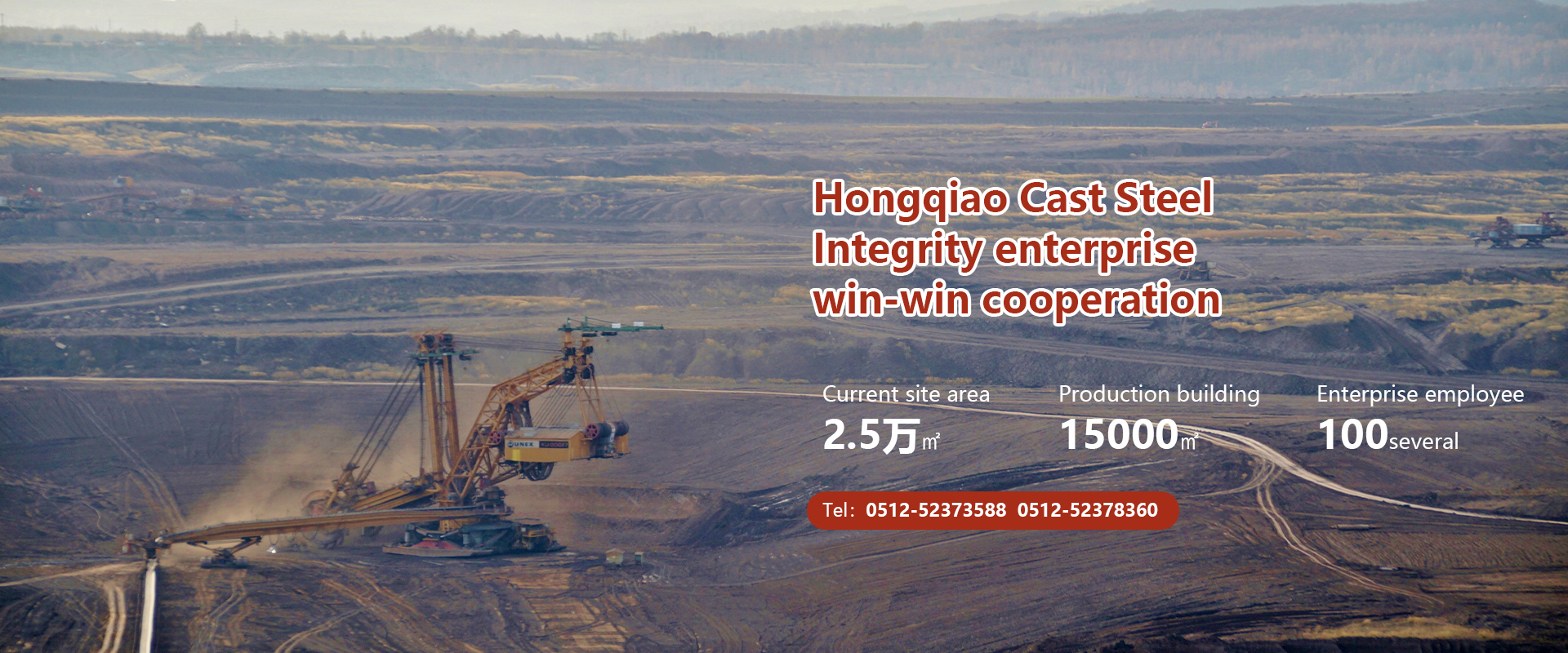Customized ship cast steel parts: Limestone sand can effectively prevent the occurrence of silicosis, while also improving the surface quality of cast steel parts and reducing crack waste. Moreover, limestone sand resources are abundant and inexpensive, and its application has generated significant economic and social benefits.
Limestone raw sand is artificially made from mineral rocks mainly composed of limestone (CaCO3) through mechanical crushing, screening and other processes. Limestone has a low thermal decomposition temperature, producing thermal decomposition and releasing gases at 825 ℃. When producing steel castings with limestone sand, pouring high-temperature steel into the mold is accompanied by other reactions: CaCO3=CaO+CO2 ↑. CO2 is a highly oxidizing gas that easily reacts with molten metal at high temperatures, as follows: CO2+C=2CO ↑; CO2+Fe=FeO+CO ↑.
Due to the inherent characteristics of limestone sand, if not controlled properly, castings are prone to casting defects such as porosity. The causes of porosity in castings are complex, mainly including precipitation porosity, reactive porosity, and invasive porosity. As far as the pores generated by limestone molding sand are concerned, limestone molding sand is the most likely to cause sand pores and invasive pores to castings.
1、 Process measures to prevent sand porosity in castings
According to the causes of sand porosity in castings, it is necessary to comprehensively strengthen quality management in the entire casting process, including molding, box fastening, pouring, etc., to prevent sand dropping, sand flushing, and blow off floating sand in the pouring system and mold cavity. The production of simple small and medium-sized steel castings generally uses clay green sand. If the composition ratio of the sand is not properly controlled, it is easy to cause sand flushing. The moisture content of molding sand has a significant impact on its wet strength, and the moisture content must be controlled within a certain range. It is generally believed that in order to prevent the formation of invasive pores, the moisture content of the molding sand should be minimized as much as possible. However, actual production has shown that the moisture content of molding sand should vary in different seasons. In the season of dry air, the moisture content of large sand should be increased to prevent sand from floating on the surface of the mold cavity after molding due to air drying and dehydration, and from entering the steel liquid under the erosion of the steel liquid, resulting in sand pores. For complex medium and large-sized components, water glass drying (surface drying) molding sand is used in production, and under standard operating conditions, there is basically no sand porosity in the castings.
2、 Process measures to prevent invasive porosity in castings
Whether it is clay green sand or water glass dry (surface dry) sand, limestone sand inevitably undergoes decomposition reactions at high temperatures. Therefore, reducing gas generation, blocking intrusion, or introducing air out of the mold are important process measures to avoid invasive porosity in castings, that is, changing the interface conditions, requiring the surface sand to easily form a sintered layer, reducing the porosity of the surface sand, and improving the permeability of the back sand. In specific operations, the surface sand should be as thin as possible during molding, generally not exceeding 30mm. 20-40 mesh coarse sand should be selected, and ventilation holes should be inserted into the back sand to create good ventilation conditions. Corresponding measures should be taken for the smelting of molten steel to minimize the FeO content in the steel. Enhanced smelting technology should be adopted to achieve reduction refining, suppress secondary oxidation of the steel, and ultimately remove oxygen through aluminum insertion. Reduce the pouring temperature appropriately and control it between 1480-1540 ℃ while ensuring that there is no cold insulation or insufficient pouring.
In summary, limestone sand is a good material to replace silica sand in the production of steel castings. Proper application will generate significant economic and social benefits. As long as we can leverage our strengths and avoid our weaknesses, adopting appropriate process measures in production can effectively reduce or avoid certain casting defects, prevent sand dropping, prevent sand flushing, and blow away floating sand from the pouring system and mold cavity. When using clay green sand, controlling the moisture content to prevent sand floating on the surface of the mold, adopting an open bottom pouring system and laying with pouring bricks as much as possible can prevent sand porosity in the casting. The use of process measures such as reducing gas generation, blocking intrusion, or introducing air out of the mold can prevent the formation of invasive pores in castings.
Changshu Hongqiao Cast Steel Co., Ltd. mainly produces various specifications of carbon steel, high, medium and low alloy steel, stainless steel, heat-resistant steel, high manganese steel, and high chromium cast iron. We provide high-quality cast steel parts for industries such as petroleum, chemical, metallurgical, mining machinery, coal mining machinery, wind power, nuclear power, and marine. We also offer customized marine cast steel parts, ABS marine engineering services, and cast steel for export overseas.





